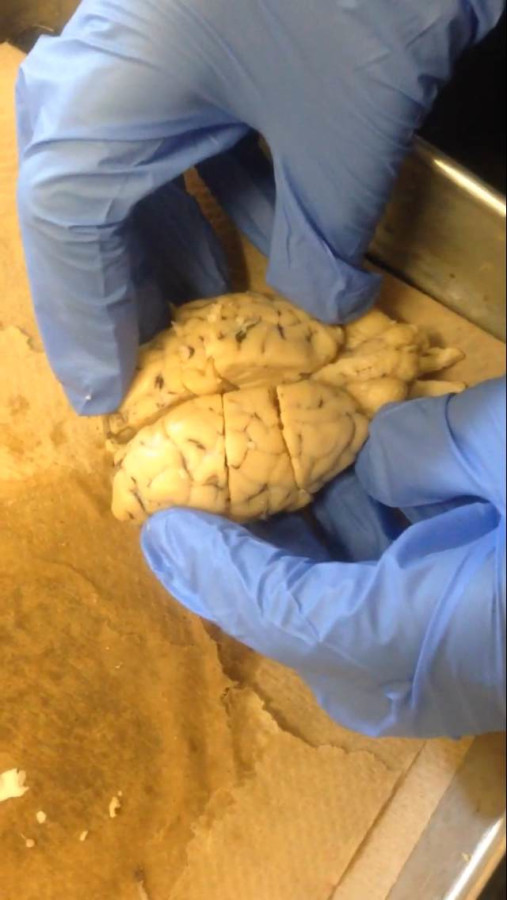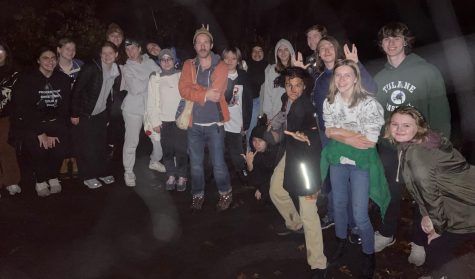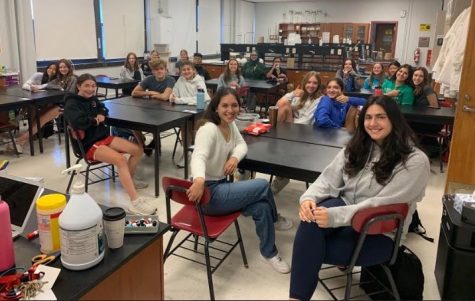From sheep brain lab comes some beautiful thoughts
“Rubbery chicken with a hint of formaldehyde” is what Catherine Walsh would say if you asked her to describe our sheep brain dissection in one word. It goes without saying that Cat’s not very good with directions and the two of us probably won’t be hitting up KFC any time soon. 
The sheep brain and the human brain have very similar structures, although the sheep brain is much smaller. This makes it easy for high school-level biology classes like Mr. Hiltunen’s first and second periods at Watertown High School to explore one of the most important components of almost all life in just under an hour.
And I’m not gonna pretend it was the greatest hour of my life, because it was absolutely gross and I was awake when Beyonce released her secret album.
The smell of the organ-preserving formaldehyde and the sloshing of the various brain liquids in our dissection trays was enough to make me want to projectile vomit all over my ginger friend. And sometimes when you moved hemispheres of the brain after cutting them with a razor blade, they made a truly awful squishing sound. It was nasty.
But somewhere along the way, in between a spirited debate on whether the brains looked more like banana bread or enlarged turkey meatballs and the imminent threat of brain goop dropping onto my foot, I realized that it was actually kind of beautiful — that there are a lot of different kinds of beautiful.
There’s really obvious beautiful like calm beaches with a rad breeze or green hills surrounded by nothing but blue sky and crisp air, and there’s that kind of beauty in eloquently decorated butterfly wings and perfectly painted robin’s eggs. But visual beauty isn’t the only kind of beauty in the world. It was Mr. Hiltunen’s student-teacher, Ms. Shah, that taught Cat and I that there’s beauty in even the most squishy forms of science, too.
I think in order to find the beauty in science, you have to be able to think beyond the lab table. Think that you’re holding something in your hands that ran one of the most complex inventions of all time — life.
After digging the hippocampus out of the other brain matter, it’s breathtaking to think that a small solid piece of cells is capable of holding almost all of an organism’s memory. Five billion years ago, the Earth was created and right in front of my face is the most complex piece of evolution we’ve seen since mammals stepped foot on land.
And if that’s not some kind of beautiful then I don’t know what is.
–May 29, 2014–
Your donation will support the student journalists of Watertown High School. Your contribution will allow us to purchase equipment and cover our annual website hosting costs.









